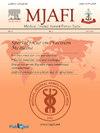用于解剖学习和复述的聊天机器人:原型与回顾
Q2 Medicine
引用次数: 0
摘要
今天最常用的短语是“聊天机器人”。尽管在医学教育领域已经有一些聊天机器人被使用,但必须开发一种满足印度医学毕业生需求的聊天机器人。作者创造了一个专门为解剖学教育设计的聊天机器人原型,其目标是创造一个满足印度教育系统需求的聊天机器人。作者创建这篇评论是为了更好地掌握聊天机器人。被称为聊天机器人的计算机程序被创造出来模仿与人类用户的对话。为了提供自动化的客户支持,响应常见问题,或引导客户完成流程,他们可以链接到各种平台,包括网站,消息应用程序和移动应用程序。为了理解和响应用户输入,聊天机器人使用机器学习和自然语言处理(NLP)算法。它们可以被编程为根据预先编写的例程做出响应,或者随着时间的推移从用户交互中获取新信息。通过自动化重复操作,聊天机器人可以在许多领域提供帮助,包括电子商务、医疗保健和银行业。他们还可以帮助企业节省时间和金钱。在解剖学的学习中,聊天机器人可以为学生提供个性化的互动学习机会。它们可以被整合到教育软件、移动应用程序和虚拟现实设置中,以帮助学生学习。聊天机器人可以被编程为提供测试和测验,对学生的表现提供反馈,并提供解释和插图,以帮助学生理解困难的概念。此外,它们还可以为学生提供医疗程序和手术的交互式模拟,使他们能够在安全的环境中磨练自己的技能。作为医学生和医护人员的工具,聊天机器人也可以用于医学教育。他们可以帮助诊断和治疗,他们也可以提供如何使用医疗设备的指导。它们还可以提供解剖学和医学疾病方面的信息。本文章由计算机程序翻译,如有差异,请以英文原文为准。
Chatbot in anatomy learning and recapitulation: Prototype and review
The most frequently used phrase today is “chatbot.” A chatbot that will meet the demands of Indian medical graduates has to be developed, despite the fact that there are already a number of chatbots being utilized in the field of medical education. The authors have created a prototype of a chatbot designed specifically for anatomy education, with the goal of creating one that will meet the needs of the Indian educational system. The authors have created this review in order to gain a better grasp of the chatbot. Computer programs known as chatbots are created to mimic conversations with human users. To offer automated customer support, respond to frequently asked inquiries, or lead customers through a procedure, they can be linked to a variety of platforms, including websites, messaging apps, and mobile apps. To comprehend and react to user input, chatbots use machine learning and natural language processing (NLP) algorithms. They can be programmed to respond according to pre-written routines or to pick up new information from user interactions over time. By automating repetitive operations, chatbots can be helpful in a number of areas, including e-commerce, healthcare, and banking. They can also assist businesses in saving time and money. In the study of anatomy, chatbots can be employed to offer students individualized, interactive learning opportunities. They can be incorporated into educational software, mobile apps, and virtual reality settings to aid students in learning. Chatbots can be programmed to offer tests and quizzes, provide feedback on student performance, and offer explanations and illustrations to aid in the understanding of difficult concepts by students. Additionally, they can be utilized to offer interactive simulations of medical procedures and surgeries to students, enabling them to hone their skills in a secure setting. As a tool for medical students and healthcare workers, chatbots can also be utilized in medical education. They can help with diagnosis and treatment, and they can also offer instructions on how to utilize medical equipment. They can also provide information on anatomy and medical disorders.
求助全文
通过发布文献求助,成功后即可免费获取论文全文。
去求助
来源期刊

Medical Journal Armed Forces India
Medicine-Medicine (all)
CiteScore
3.40
自引率
0.00%
发文量
206
期刊介绍:
This journal was conceived in 1945 as the Journal of Indian Army Medical Corps. Col DR Thapar was the first Editor who published it on behalf of Lt. Gen Gordon Wilson, the then Director of Medical Services in India. Over the years the journal has achieved various milestones. Presently it is published in Vancouver style, printed on offset, and has a distribution exceeding 5000 per issue. It is published in January, April, July and October each year.
 求助内容:
求助内容: 应助结果提醒方式:
应助结果提醒方式:


